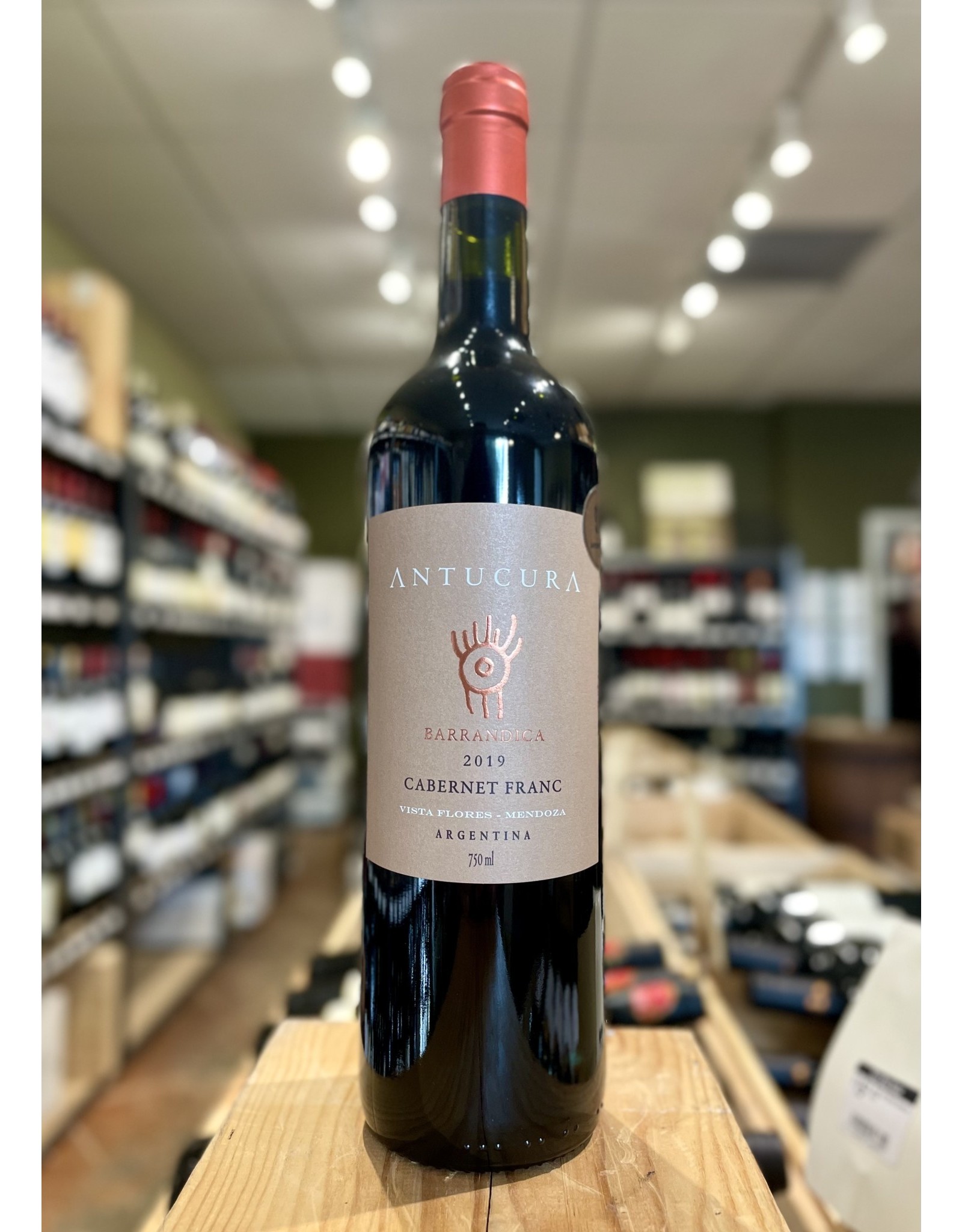Antucura Cabernet Franc 2019
| Article number: | TW-1002676 |
| Availability: | In stock |
Red Plum, Fresh Raspberry, Blackberry, Grilled Shishito Peppers, Black Peppercorn
Initially, the owner of Antucura Anne-Caroline Biancheri moved from France to the Mendoza region of Argentina to open a publishing house. She focused on books about Argentine winemaking, the history and architecture of the region and the native flora and fauna. Gradually during this time, her passion for wine continued to grow, and before long, Anne- Caroline purchased a small vineyard in the town of Vista Flores. Located 4,000 feet above sea level in the Uco Valley sub- region, this is where the Antucura wines took shape.
Always invested in the scientific as well as the creative side of winemaking, Anne-Caroline brings both passions to the table at her estate. The soils at Antucura, a name which means “Sun Stones” in the indigenous Mapudungun language, are unique for the Uco Valley in that they consist mostly of pebbles and baseball-sized stones. Similar to Chateauneuf-du-Pape in the Rhone Valley, many of the red wines grown in these rocky soils display notes of spice and dried herbs, which was one of the major contributing factors that led to the establishment of vineyards in the area. Additional ties to Anne- Caroline’s native France come in the form of the Cabernet Franc and Merlot clones planted at the estate, both of which were sourced from Bordeaux’s legendary Pomerol commune. She gave a further nod to her homeland by planting with a high vine density per acre, ala Bordeaux, which is uncommon in the dry, sandy soils of Mendoza. She could do this because all of the vineyard work and harvesting is done by hand.
To make this wine, the team at Antucura sources fruit from their oldest Cabernet Franc vines. Green harvests and regular pruning are carried out in the vineyard to maintain quality and regulate yields. As mentioned above, all fruit is harvested by hand and brought to the winery for sorting and destemming. The fruit sees approximately one week of cold maceration in stainless steel before yeast inoculation, after which fermentation takes place. All fruit is pressed using an antique wooden basket press. After malolactic conversion occurs post-fermentation, the wine is racked to used French oak barrels. A second racking is used for natural clarification, and only the tiniest amount of sulfur dioxide goes into the finished wine.




